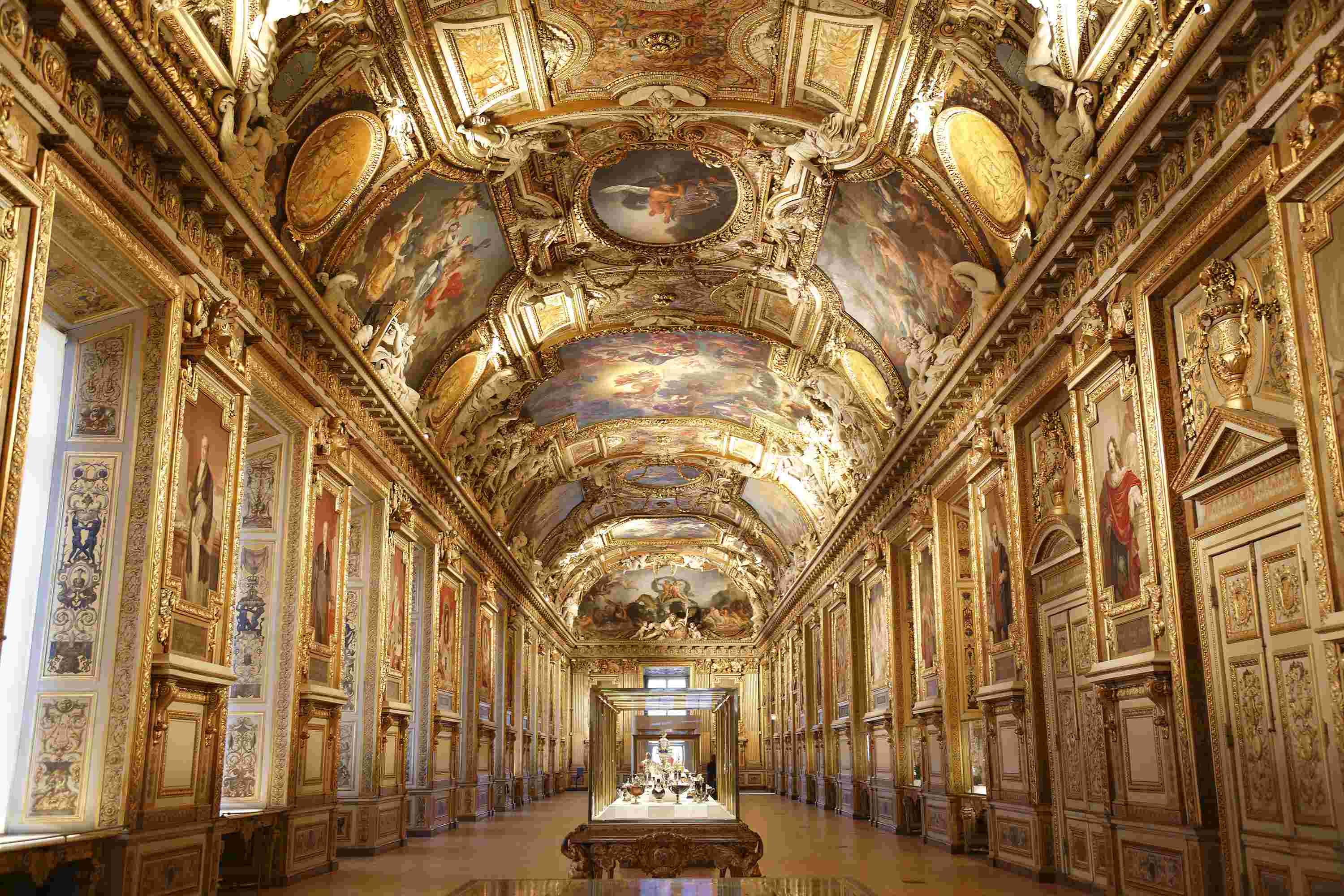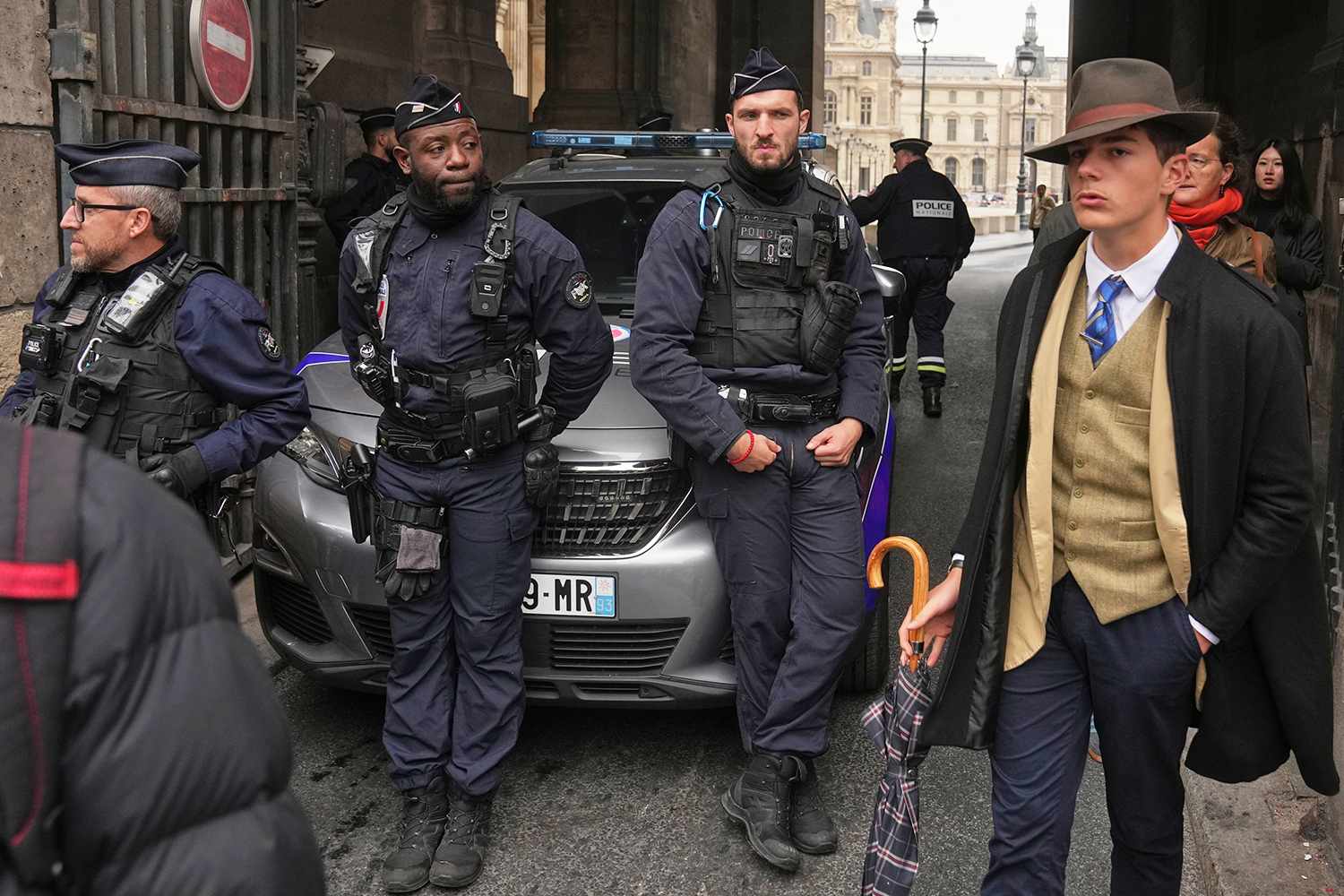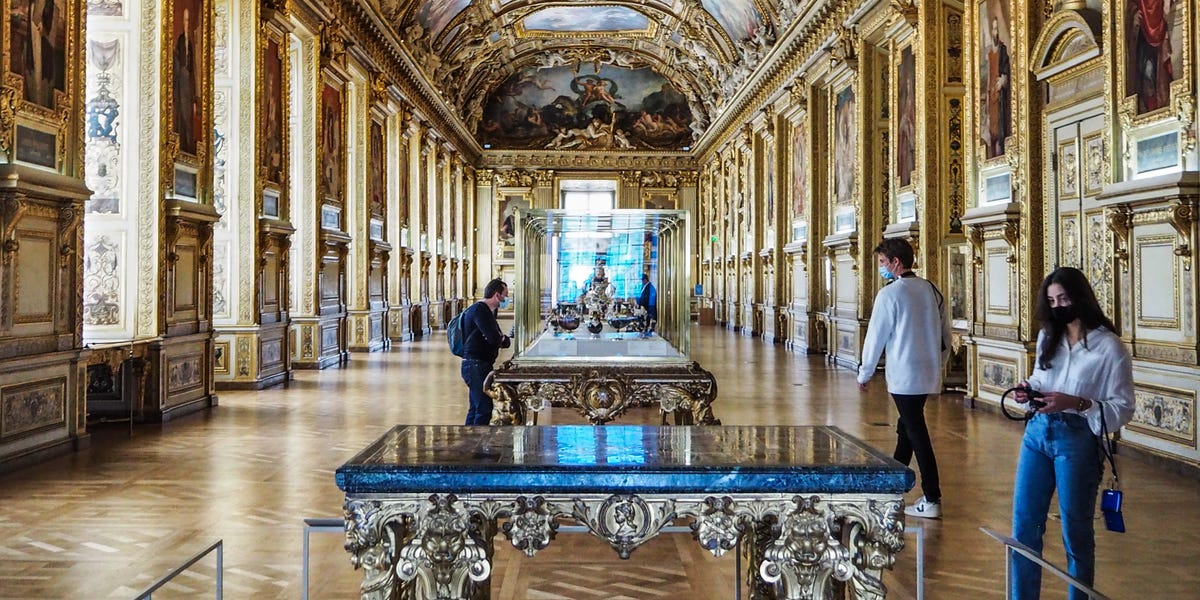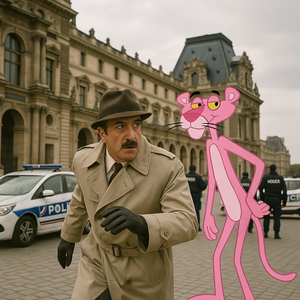The Louvre jewel heist has now been written about with incredulity, wry wit, and outright hilarity - and today the news broke that two suspects of the four who pulled off the heist have been arrested. One of them was about to fly out of the country from Charles de Gaulle airport to Algeria. What a showstopper!
But one thing intrigues me about this and other similar thefts: how do you value such goods?
Before we get there, can I just revel for a moment in the hilarity? Even though the robbery took place almost two weeks ago now, the outpouring of analysis and reflections has just been wonderful. In a moment of global stress, it has tickled us all, and some great writers have only just begun sharpening their pencils.
Primus inter pares, IMHO, has been Caity Weaver, who wrote in the Atlantic that a pair of cat burglars cleverly robbing a museum in broad daylight and escaping ("beep beep") on mopeds is “very nearly the Frenchest thing that could have happened”.

It did have a kind of performance-art quality. There’s something magnificently absurd about the contrast between the ornate grandeur of the Louvre and the blunt utility of a furniture lift. For centuries, monarchs built vaults, wars were fought, and empires rose and fell over the glittering promise of jewellery. And now, it’s loaded onto scooters normally used for delivering pizza.
Not to over-dramatise, but it is something of a metaphor for our age: a dazzling façade masking systemic incompetence. Oddly, the heist feels like a French fable for late capitalism - a collision between elegance and entropy. Art historians might call that juxtaposition postmodern. I call it minimalist surrealism.
Rather cruelly, one of the most repeated memes has been that while the world might have been bewildered by the robbery, what was most astounding is that four Parisians were up and about early (!) - well, fairly early; it was 9.30 - on a Sunday morning, ready for work.
“Here was a dreamy little crime: No one was hurt. No beloved painting was damaged. Some out-of-the-box thinkers have perhaps earned a handsome paycheck for their ingenuity. And jewellery, really, is meant to be worn, not stored in sterile boxes. One hopes that the thieves take a moment to at least try on the rather subdued sapphire necklace of Queen Hortense (yes—the famous Queen Hortense) before taking pliers to it,” she writes.

Equally fun is Shahidha Bari writing in the Financial Times, who pointed out that the robber for a Fabergé Coronation Egg in Ocean’s Twelve needed to do backflips across a cascade of laser-activated alarms. “Yet it turns out that all you need for a real-life heist are balaclavas, angle grinders, and scooters revved up for a speedy getaway. Someone should tell Tom Cruise to stand down from whichever ceiling he’s currently dangling off. The Louvre heist was not so much Mission Impossible as Mission Really Quite Feasible”.
And what about that CCTV disaster? It turns out that only some 75 per cent of the Louvre seems to warrant CCTV surveillance. "This shortfall makes little sense for a museum with one of the world’s most extensive collections of art, including the Venus de Milo and the coronation crown of Louis XV. As one Instagrammer deadpanned: “I can get a camera to watch my dog sleep . . . I don’t understand what their excuse is”, the FT's Bari writes.
The basket-lift company that made the contraption used in the robbery, German firm Böcker Maschinenwerke GmbH, couldn't help itself and turned to humour for an advertising gimmick. “When things need to go quickly” sloganed the ad, which boasted features like “up to 400 kg of treasures at 42 m/min – as quiet as a whisper.”
A photographer who accidentally included a dapper young man in a fedora walking past a group of police lounging at one of the entrances to the Louvre started a whole swathe of tweets speculating he was a detective because, obviously, they would call in Inspector Clouseau.

Bari also pointed out that the French authorities might have responded to the robbery with outrage and shame, but “Gen Z - those enfants terribles - responded to the robbery with memes. Gems of a different kind included posts titled, “Outfits I’d wear to rob the Louvre” and an interpretative dance inspired by the robbery set to a soundtrack of ‘Je ne regrette rien’,” she writes.
But back to the value question. As Weaver points out in the Atlantic piece, France’s minister of the interior gave the value of the eight pieces the thieves spirited away as “priceless.” But actually, the real value when quantified is not so much.
“How disappointing, then, when Louvre officials later updated the jewels’ combined value to about $102 million. One hundred two million dollars is not nothing, of course; it’s slightly less than half of what the Oakley-sunglasses baron sold his home for last year—and that was a super nice house, and it was in Malibu—but still. Priceless sounds more like, you know, $900 trillion. And this was not that.”
But are they even worth $100m? Arguably, the most impressive of the eight pieces stolen was an emerald and diamond necklace and earring set, which consists of 32 emeralds and 1,138 diamonds, once belonging to Empress Marie-Louise (the 'famous' Empress Marie-Louise). That sounds impressive, but if we assume an average small diamond size of, say, 0.10 carats (just a guess), that suggests a total of 135 carats for that one item. A 0.1 carat diamond is about 3mm across - but prices for that size will vary massively. A high retail price will fetch about $5,000 per carat.
That’s only around $675,000. Assuming the same price range for the other items, you are looking at $10-million max for the jewels on their own. And this is historically true. A jewelled 19th-century coronation sword belonging to King Charles X, which was diamond-studded, was stolen in 1976. The sword has never been recovered, so experts think the stones were unmounted and sold for their weight price, which would have been about 5% of the cited value.

Given that the heist value is supposedly $100-million, the historic/unique-piece premium must account for most of that value. The stones on their own will be worth much, much less, especially in the age of machine-made diamonds.
But (big but) the jewellery, untouched, could, following the heist, be worth much more! Seriously.
As Weaver points out, “the irony, of course, is that these trinkets have garnered far more attention now than they would have had they remained on view at the Louvre for 5,000 years. The world’s major news outlets are cranking out reams of text just to have an excuse to publish a sumptuously detailed photograph of a tiara studded with milky pearls the size of apricot pits, or a necklace (from—can you believe it?—a larger set of items made for Napoleon’s second wedding) festooned with globs of mint-jelly emeralds.”
The obvious comparison is the theft of the Mona Lisa, which was a liked but not adored painting before it was stolen in 1911 by an Italian workman named Vincenzo Peruggia. The Louvre didn’t even notice the absence for over a day. At first, staff assumed the painting had been taken down for photographs.
When the truth sank in, the museum shut down for a week. The press went berserk. Paris was in uproar — thousands of people crowded outside the Louvre gates, chanting for La Gioconda’s return. For two years, the painting was missing. Newspapers across Europe, the U.S., and South America printed breathless updates, conspiracy theories, and satirical cartoons: The New York Times ran front-page stories for months. Le Petit Parisien printed mock love letters addressed to Mona. Pablo Picasso and the poet Guillaume Apollinaire were briefly arrested (wrongly) and interrogated — further adding to the myth.
The painting became the story of modern art — a missing masterpiece, a national humiliation, a whodunit with a smile. But that, of course, was a painting. Presumably, in this case, the reason the thieves chose diamonds was precisely because their identity could be disguised in the crucial offloading process.
It reminds me a bit of the seizure earlier this month of the four Lamborghinis (and a whole bunch of other stuff, including other cars) from the home of Hangwani Morgan Maumela after the fraudulent procurement from Tembisa Hospital. I was joking with my podcast cohort, Mark Barnes, about why Maumela would have bought not just one, but three 'Lambos' - I mean, surely after you bought the second as a backup car, that would be enough?
Barnes said the problem is that when you steal, it's not just that it's hard to offload the goods; in a more philosophical sense, it's never enough. When your input cost of capital - your earnings capacity, the labour, and the ingenuity that you put into creating wealth - is zero, then the value of what you create is also zero, he argues.
Likewise, the value of the goods to the thieves is equivalent to their effort, and their ingenuity and their input cost of capital, which, let's face it, wasn’t that arduous. I mean, the whole robbery took seven minutes.
They say crime doesn’t pay. But what people tend to forget is that it actually doesn’t pay. Literally.
So ultimately, I don’t think this robbery is “terrific” at all. It’s just sad. 💥
From the department of the department of higher education ...
From the department of at first very slowly, then very quickly ...

From the department of the 384th reason to never ever own airline stocks ...

Thanks for reading - please do share if you have a friend (or enemy!) you think would value this blog and ask them to add their email in the block below - it's free for the time being. If the sign-up link doesn't appear, you'll find it on the site.
By all means, comment on the post - I'm interested in all feedback, good, bad, indifferent.
Till next time. 💥








Join the conversation